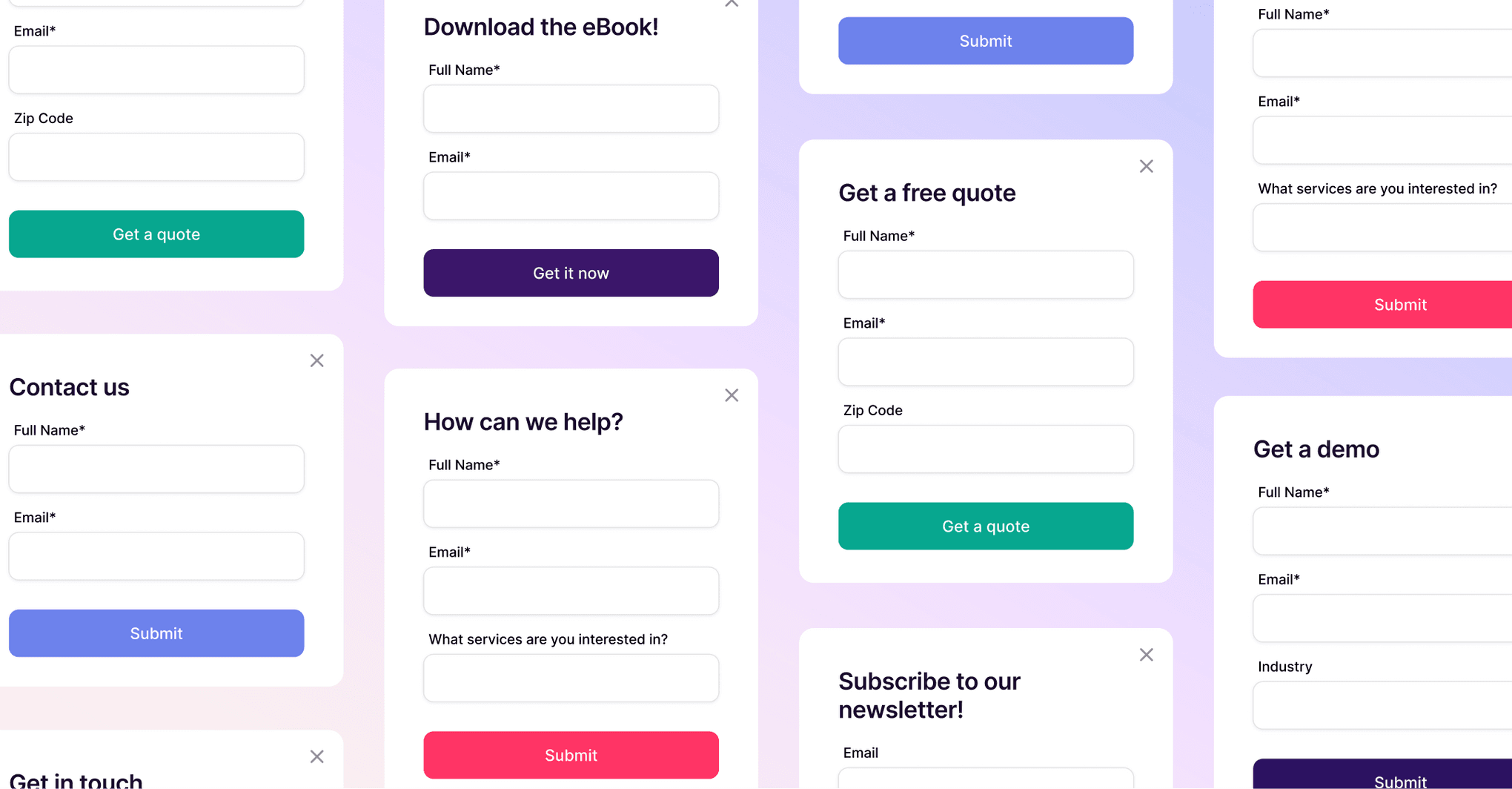Jemicah Marasigan
Content Marketing Manager
More leads don’t always mean better results, especially if you're running a service-based business. For agencies, consultants, and media brands, the key isn’t volume. It’s finding the right clients, building real relationships, and filling your pipeline with people who actually need what you do.
And that starts on LinkedIn.
If your dream client is a head of marketing at a growing startup, a founder looking for a rebrand, or a content lead at a lifestyle brand — you’re not going to find them cold on Google. But they are likely active on LinkedIn.
With a smart approach, a clear workflow, and the right tools, LinkedIn can be your most efficient channel for consistent, qualified leads.
Let’s break down five LinkedIn sales tactics that work in 2025.
1. Use advanced LinkedIn search filters to find high-fit leads
LinkedIn’s search filters are still one of the most underused prospecting tools — especially for service-based businesses.
Why scroll endlessly or blast generic messages when you can pinpoint exactly who you want to talk to?
With LinkedIn’s built-in filters (and even more options if you’re using Sales Navigator), you can zero in on your ideal decision-makers in just a few clicks. No more guessing. No more “spray and pray.”
Start by filtering for:
-
Job title: Think specific, not vague (think “Head of Content,” “Marketing Director,” “Founder,” or “Operations Manager”)
-
Industry: Choose sectors that align with your niche
-
Location: Narrow down to your city, state, or region if you serve a local market or want to build in-person relationships
-
Company size: Are you targeting lean startups, mid-sized teams, or large enterprise orgs?
-
Current company: Great for targeting competitors of past clients or reaching out after recent funding rounds
-
Seniority level: Focus on people with decision-making power (think managers, directors, VPs, and founders)
Examples in action:
-
If you run a creative agency specializing in food and beverage, you might search for brand managers at CPG companies within your state or metro area.
-
If you're a consultant helping scale SaaS operations, try filtering for Ops Leads or Revenue Managers at mid-sized tech firms in high-growth regions.
-
If you offer fractional CMO services, you might target Series A or B startups with no full-time marketing leadership and founders still leading go-to-market.
These filters don’t just help you find more prospects — they help you find the right ones, faster.
2. Use the “People Also Viewed” sidebar to uncover similar prospects
Found someone who seems like a dream client? Keep going.
The “People Also Viewed” section on most LinkedIn profiles is a goldmine for finding lookalike leads. It often includes other professionals in similar roles or companies—great for expanding your outreach without starting from scratch.
Let’s say you just found the Head of Partnerships at a media brand. The “People Also Viewed” panel might surface other partnership managers at competing publications, or founders at similarly sized agencies.
This is especially useful if you work with specific verticals, like health & wellness brands, early-stage startups, or boutique hospitality groups. It helps you deepen your reach in one niche and build a smarter, more strategic list.
3. Track who’s engaging with your content — and follow up
LinkedIn isn’t just a place to find leads, it’s also where leads find you. But here’s the catch: most people aren’t raising their hand and saying “I want to work with you.” They’re lurking. Watching. Clicking. Maybe liking. Maybe not. Which means it’s up to you to spot the signals.
If you’re posting content even semi-regularly—client wins, behind-the-scenes, advice for others in your space — chances are, people in your network are paying attention. And some of those people might be your next clients. But if you’re not checking, you’re missing it.
Here’s how to use engagement as a prospecting tool:
-
Look at who’s viewed your profile (especially if they match your ICP)
-
See who’s liking or commenting on your posts, even if they’re not connected
-
Revisit connection requests you’ve sent that were accepted but went cold
These micro-interactions are warm signals. You don’t need to jump into a hard pitch — using automated LinkedIn outreach for routine tasks can give you more time to craft thoughtful, personalized messages.
Here’s a simple message you can use:
Hey Taylor, thanks for engaging with my recent post. I noticed we’re in a similar space — I work with a few [industry] teams on [relevant service].
Let me know if you're ever looking for support or just want to trade ideas. Always happy to connect.
And it works, especially in service-based industries where timing is everything. Sometimes, someone’s been thinking about hiring an expert like you… they just needed that one message to get moving.
Now here's where it gets easier: Copper’s LinkedIn Chrome Extension lets you save any lead from LinkedIn directly into your CRM with a single click. No spreadsheets, no tabs, no backtracking.
You can:
- Instantly pull in their name, title, company, and LinkedIn URL
- Check if they’re already in your pipeline
- Add them to a follow-up sequence, straight from their profile
You’re already finding the right people, Copper helps you actually do something with that info.
Get the latest from our blog every month
4. Polish your profile so it sells when you’re not in the room
Sometimes, the best kind of selling happens without you saying a word. That’s the magic of a well-crafted LinkedIn profile.
Before someone replies to your DM or accepts your connection request, they’ll almost always scope out your profile. What they find there can either build trust or bounce them right back to scrolling.
Your profile should act like a mini sales page: showing what you do, who you help, and why you’re good at it. And paired with consistent content that backs it all up? Now you’ve got a one-two punch that builds authority and brings leads to you.
Here’s what to focus on:
-
Headline: Clearly communicate what you do and who you help (e.g., “Helping lifestyle brands scale content through fractional strategy support”)
-
About section: Include who you serve, the kind of work you do, and the value clients get
-
Featured section: Show off client work, case studies, podcast guest spots, or press features
-
Experience: Speak to client results, not just roles or responsibilities
-
Content: Share thought leadership that shows you’re an expert in your niche — post tips, insights, and behind-the-scenes breakdowns that make people trust how you think and work
And yes, you still need a good headshot. This is LinkedIn, not your group chat.
The more your profile and content reflect the real value you bring, the more likely it is that leads will take the next step — without needing a pitch from you first.
5. Write DMs (or InMails) that don’t sound like spam
Let’s be real: most cold messages on LinkedIn aren't the best. But that's a good thing! Because if you put just a little more thought into yours, you’ll instantly stand out.
Before we get into how to write better DMs, here’s why you should send them at all:
-
People don’t bite on content alone: Thought leadership builds visibility, but it doesn’t always spark direct conversations. DMs are how you turn that passive interest into active engagement.
-
You don’t need to wait for leads to come to you: Reaching out (politely, strategically) puts you in control of your pipeline — instead of waiting for someone to download your freebie and magically convert.
-
LinkedIn is built for warm outreach: Everyone is there to network or grow professionally. You’re not interrupting dinner, you’re starting a conversation in a room full of people who showed up for this exact kind of thing.
The key? Don’t send messages that sound like you copied and pasted them to 200 people before breakfast.
Your pitch isn’t one-size-fits-all — and your messages shouldn’t be either. That means no generic “saw your profile, wanted to connect” intros.
Here’s what to do instead:
- Mention something specific (a post they shared, a project you saw, or a common connection)
- Keep it short and relevant — what’s one reason you’re reaching out now?
- Offer a light next step. Not a sales call. Just a conversation.
For example:
Hi Jenna,
Saw your post about launching a new podcast — congrats! I work with a few boutique media teams on brand launches like this and thought it might be worth connecting.
Happy to send over a few ideas that have worked well for others in this space. Open to chatting?
This works better for prospecting on LinkedIn because it feels human, timely, useful, and not transactional.
And if you're reaching out to people you haven’t connected with yet, InMail (via LinkedIn Premium) can be worth the investment — especially for higher-ticket services.
Ready to turn LinkedIn into your go-to sales channel?
LinkedIn isn’t just for job hunting or thought leadership. When used intentionally, it can be your best channel for sales prospecting — especially if you’re offering services that require trust, strategy, and relationships.
And when you're ready to make prospecting part of your actual workflow (not just something you do when things are slow) Copper's LinkedIn Chrome Extension can help you stay organized, save time, and never lose track of your outreach again.
Want to see how Copper supports agency and service-based prospecting from LinkedIn to follow-up? Start your free trial and give your leads a place to land.






